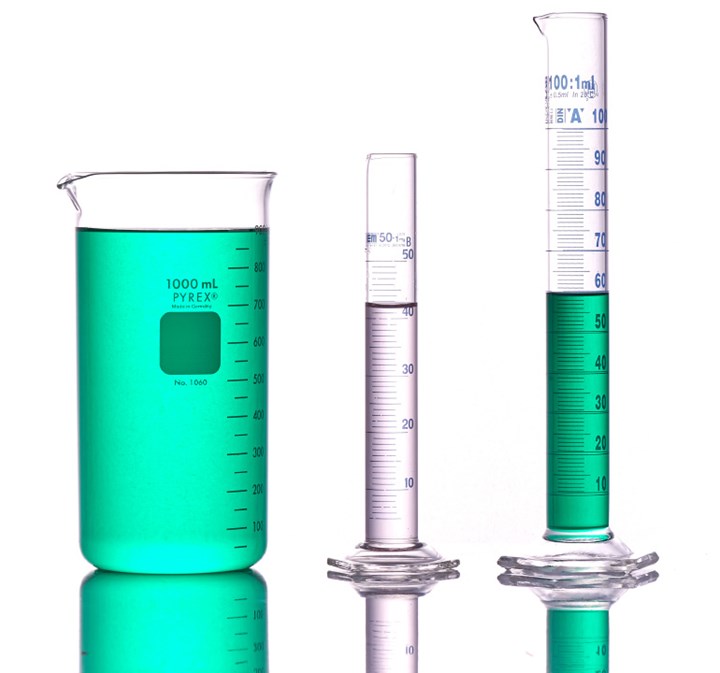Episode 11: Weathering the Supply Chain Storm, Part 2 - Metal Plating
Douglas Hughes, product manager wear resistant coatings for MacDermid Enthone Industrial Solution discusses the current supply challenges facing the finishing industry.

Electroless nickel processing relies on sodium hypophosphite, a chemical that is currently in short supply as the whole of manufacturing struggles with supply chain challenges in the wake of the COVID pandemic. Photo Credit: MacDermid Enthone and Coventya
In this episode of On the Line, Products Finishing revisits an important topic from one of our recent episodes — disruptions in the supply chain. From COVID to workforce to supply disruptions, the past year and a half has wreaked havoc with the flow of materials for everyone in manufacturing. This episode we’re focusing on the metal plating side of the story.

Douglas Hughes, product manager wear resistant coatings, MacDermid Enthone and Coventya.
As finishers struggle to make sense of what’s happening and find ways to navigate the inevitable shortages and price increases, Douglas Hughes, product manager wear resistant coatings for MacDermid Enthone Industrial Solution offers insights into the causes of the supply challenges metal finishers are facing, and discusses strategies for coping with the problem.
Featured Content
An excerpt from our podcast interview with Douglas Hughes:
PF: So today we're digging into the chemicals and the raw materials that are used to create those. And this is kind of become a really big concern over the past few months/weeks. Can you give us a little bit of an overview of the types of struggles that metal finishing operations are dealing with in regard to chemical procurement?
DH: Wow, it's a huge issue. And yeah, you're right. I think that the industry has been dealing with this for basically, since about the beginning of the year, COVID, presented its own challenges with the supply chain. And then when the economy opened back up, there was such a huge demand that put some pressure on supply chain, and now you're seeing it take a more global scope.
Okay. So, the raw material shortages, they're all across the industry and all across different types of industries, but it's global in scope. So it's, it's impacting everybody, a lot of contributing factors to this, as you know, you see rising fuel costs right now, which is most recent fuel is practically doubled.
In the last year, you've seen rising shipping costs, largely because there's a shortage of containers and the shortage of freighters. We’ve also seen a shortage of labor. One of the things that I hear the most in the field from all of our customers is everybody's hiring. The shortage of labor relevant to the supply chain is really, I think it's hitting the hardest in drivers. There's a shortage of drivers out there, to be able to get the products that we need to our doorsteps, you got the shortages of shipping containers, as I've already mentioned. And because there's a shortage of late of drivers, I think that's also a significant contributing factor to the delays that we're seeing in our shipping ports. I saw this morning that the Port of Los Angeles has now reached 100 ships sitting out in the Pacific Ocean just waiting to be unloaded.
So all of these are contributing factors to the raw material shortages. I think you also, the obvious impacts were the rough summer of weather that we had back in March, there was an ice storm down in the south that knocked out a lot of commodity chemical manufacturers down in Texas. And, we're still feeling the impacts of that.
And then you couple that with some of the tropical storms and the hurricane that hit down in the Gulf, and that knocked out a bunch of oil platforms, so that's contributing to it. So you've got this perfect storm of events, that is just layer on layer, it just keeps adding to the problem.
PF: One metal plating agent, sodium hypophosphite, which is widely used in nickel plating as reducing agent has recently become in very short supply. I'm wondering if you can talk about specific factors that are contributing to that. And what that shortage means for finishers?
DH: Well, yeah, I mean, you know, one of the things we really wanted to do as a company was with this particular shortage is we want to be out in front of this, obviously, and we want to be able to provide as much useful information to our customers and partners and as we can.
Let me just kind of give a brief background on it. The sodium hypo phosphate shortage is really a result of a China power conservation policy that was started in August really, but didn't really hit the phosphorus production, the main component of sodium hypophosphite until September.
So China has been struggling with power shortage. Some of that has to do with the shortage of coal in Asia, though, that that's disputed, depending on what circle you run in coal prices, currently, certainly, and probably a bigger consideration, China is completely unwilling to raise their electricity prices. And ultimately, what the Chinese government decided is, they've got the the Olympics coming up, which I think is probably less a part of the story than they're playing, but they're trying to conserve energy.
One of the ways that they've come up with to try to do that is to limit power to certain industries. And how did they determine that? Well, what the Chinese government has done is they've gone to their most industry rich regions. And what they've essentially said is, you have to have a certain amount of return on investment, for the amount of power that you use in order to continue to use the amount of power you're using.
So they've established this threshold, a certain number of yuan per kilowatt hour. If you use twice the amount of power to reach that you want threshold, you have to cut your production by 50%. If you use 3x, the amount of power that it takes to get to that threshold, you have to cut your production by 90%. Unfortunately, phosphorus mining falls in the category of 3x.
So effective the middle of September, I believe it was September 11, when the policy was actually published, all the phosphorus mines were ordered to reduce down to less than 10% of their capacity, which of course produced an immediate squeeze on not just the sodium hypophosphite supply, but other phosphorus based materials and the one big one being fertilizer.
So because China controls 70% of the world's phosphorus production, this impacts a lot of different products, fertilizer, fire retardants in a number of other areas. Funny enough, hypo only contributes to about 1%, less than 1% of the global phosphorus consumption. The fertilizer market globally is about $24 billion sodium hypo phosphate Global Markets about 220 million, so it's less than 1%. And fertilizers always going to be number one. Now within the sodium hypophosphite market, the metal finishing component of that market makes up about less, we'll say less than 5% of that.
So from a supply issue, China puts in these policies, the production of phosphorus gets gutted overnight. And the question really begs what's going to happen when they turn it back on so the policy said that from September through December, that's going to be the length of time that you have to have this reduction in industry output. So once they turn that faucet back on, the concern is is one how much time is it gonna take to refill the pipeline and then to where does the hypophosphite supply fall on on that ladder of hierarchy.
So these certainly some of the concerns that we have, you tie all that in with the logistics pressures that we just talked about. And, as far as my product line goes, this is a significant impact on the metal finishing industry. And, given the broad range of applications that electroless nickel is used in, it really penetrates a lot of different industries, aerospace, automotive, electronics, medical device, oil and gas. So, it's a, it's a serious concern, something that we're watching very closely.
RELATED CONTENT
-
Smut and Desmutting
Question: I am new to this industry and have heard about smut and desmutting operations.
-
Gold and Silver Plating Basics
An overview of precious metal electroplating processes.
-
Nickel Electroplating
Applications, plating solutions, brighteners, good operating practices and troubleshooting.



















